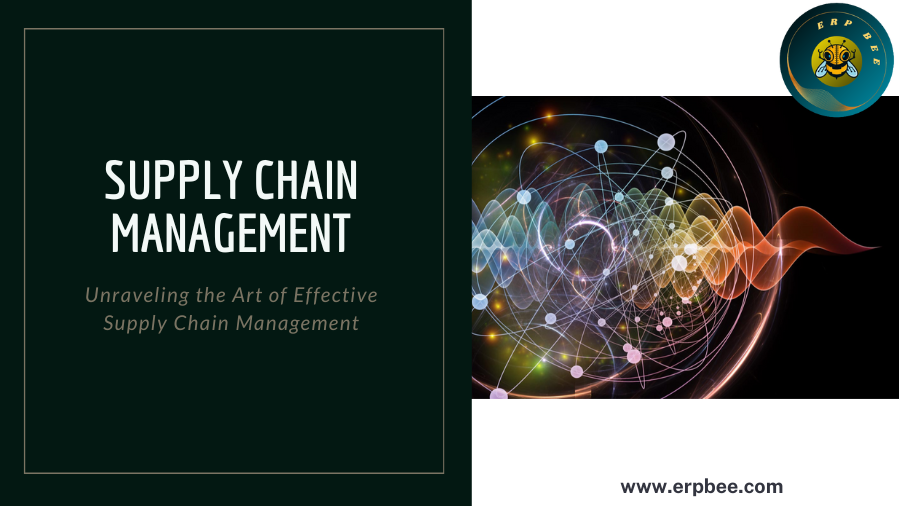In the intricate dance of modern commerce, where goods traverse the globe with seamless precision, supply chain management emerges as a pivotal force that shapes the success and resilience of businesses. At its core, SCM orchestrates the intricate interplay between suppliers, manufacturers, distributors, retailers, and customers, ensuring products flow efficiently from raw materials to end consumers. In this blog, we delve into the world of SCM, exploring its significance, key components, challenges, and strategies for optimization.
The Significance of Supply Chain Management
Supply chain management (SCM) serves as the nerve center of a business's operations. It encompasses a holistic approach to planning, implementing, and controlling the flow of materials, information, and finances across the entire supply chain network. A well-executed supply chain management strategy leads to enhanced efficiency, reduced costs, improved customer satisfaction, and increased competitive advantage.
Key Components of SCM
- Planning: Effective supply chain management begins with robust demand forecasting and inventory planning. Businesses must accurately predict customer demand, align procurement with production, and optimize inventory levels to prevent stockouts and excess carrying costs.
- Sourcing: Sourcing involves selecting suppliers, negotiating contracts, and managing relationships. A diverse and reliable supplier base ensures a steady flow of high-quality materials and components.
- Manufacturing/Production: This phase encompasses transforming raw materials into finished goods. Efficient production processes, quality control, and capacity optimization are crucial to meeting customer demand.
- Logistics and Transportation: Timely and cost-effective movement of goods is essential. Logistics management involves selecting transportation modes, route planning, and tracking shipments to ensure on-time delivery.
- Distribution: Effective distribution ensures that products reach retailers or end customers promptly and in optimal condition. Distribution networks should be designed to minimize transit times and costs.
- Retail and Customer Engagement: The final step involves engaging customers, managing orders, and providing exceptional service. Customer feedback and data are invaluable for continuous improvement.
Challenges in Supply Chain Management
Navigating the complexities of supply chain management comes with its own set of challenges:
- Globalization: As businesses expand globally, supply chains become longer and more intricate, leading to challenges in coordinating and controlling operations across various geographies.
- Demand Variability: Fluctuating customer demand due to market trends, seasonality, and unforeseen events can lead to stockouts or excess inventory.
- Supply Chain Disruptions: Natural disasters, geopolitical factors, and supply chain disruptions (as witnessed during the COVID-19 pandemic) can disrupt the flow of goods and impact operations.
- Inventory Management: Striking the right balance between carrying costs and meeting demand requires precise inventory management.
- Communication and Collaboration: Effective supply chain management relies on seamless communication and collaboration among stakeholders, including suppliers, manufacturers, and distributors.
Strategies for Optimizing Supply Chain Management
- End-to-End Visibility: Implement technologies like Internet of Things (IoT) sensors, RFID tags, and advanced analytics to gain real-time visibility into the entire supply chain. This enables proactive issue resolution and informed decision-making.
- Demand Forecasting: Leverage data analytics and historical trends to develop accurate demand forecasts. This minimizes the risk of stockouts or overstocking.
- Supplier Collaboration: Foster strong relationships with suppliers and engage in collaborative demand planning to align production with demand.
- Lean Principles: Adopt lean principles to eliminate waste, optimize processes, and reduce lead times.
- Risk Management: Develop risk mitigation strategies and contingency plans to address potential disruptions.
- Technology Integration: Embrace SCM Software (SCMS) solutions, Enterprise Resource Planning (ERP) systems, and blockchain technology to enhance transparency and traceability.
The Sustainable Supply Chain
In an era of heightened environmental awareness, sustainability is a key consideration in SCM. Businesses are increasingly focusing on reducing carbon emissions, minimizing waste, and ensuring ethical sourcing practices. Sustainable supply chains not only align with societal expectations but also lead to cost savings and brand enhancement.
Conclusion
Supply chain management is the intricate art of harmonizing diverse elements into a symphony of efficiency, reliability, and customer satisfaction. Its impact reverberates across industries, shaping the way products reach our hands and influencing the success of businesses both large and small. By recognizing its significance, addressing challenges head-on, and embracing cutting-edge technologies, businesses can master the intricacies of supply chain management and navigate the complex landscape of modern commerce with confidence.
